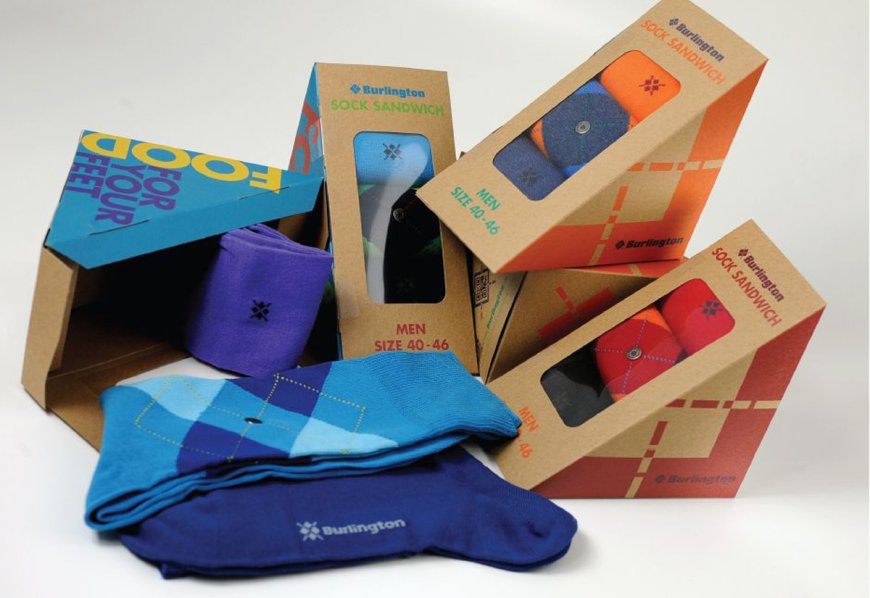The Ultimate Guide to Sock Packaging
Sock packaging is a crucial aspect of the textile industry, influencing not just the practicality of storage and shipping but also the appeal of the product to consumers.

With the right packaging, brands can elevate their sock offerings, creating a memorable first impression while ensuring functionality. In this comprehensive guide, we will explore the various elements of luxury sock packaging, best practices, innovative trends, and tips to enhance your packaging strategy.
Why Sock Packaging Matters
Effective sock packaging serves multiple purposes. It protects the product, communicates brand values, and enhances the customer experience. Here are some key reasons why sock packaging is important:
- Protection: Quality packaging safeguards socks from dust, moisture, and damage during storage and transportation.
- Brand Identity: Unique and attractive packaging can set a brand apart, helping consumers identify and remember it.
- Information Dissemination: Packaging provides essential information such as size, material, care instructions, and branding elements.
- Sustainability: Eco-friendly packaging can resonate with environmentally-conscious consumers, enhancing brand reputation.
Types of Sock Packaging
Choosing the right type of packaging depends on the product's target market and brand identity. Here are some popular sock packaging options:
1. Poly Bags
Poly bags are lightweight, cost-effective, and versatile. They can be printed with branding elements and product information, making them a popular choice for many sock brands.
- Pros: Inexpensive, customizable, and suitable for bulk packaging.
- Cons: May not provide adequate protection against moisture.
2. Cardboard Header Cards
This type of packaging features a cardboard card that holds the socks in place, often stapled or glued to the socks. Header cards can be customized with vibrant graphics and essential information.
- Pros: Attractive presentation and easy to display in retail settings.
- Cons: Slightly more expensive than poly bags and may require additional assembly.
3. Boxes
Boxes provide a premium packaging option that is ideal for gift sets or specialty socks. They can be designed in various shapes and sizes to fit specific products.
- Pros: Excellent protection, enhances brand image, and can be reused.
- Cons: Higher cost and potential for increased shipping fees due to weight and size.
4. Eco-Friendly Packaging
With the rise of sustainability, many brands are turning to eco-friendly packaging options made from biodegradable materials or recycled paper.
- Pros: Appeals to environmentally-conscious consumers and reduces carbon footprint.
- Cons: May be more expensive than traditional packaging options.

Key Elements of Sock Packaging
1. Design and Branding
The design of your sock packaging should reflect your brand's identity and resonate with your target audience. Consider the following elements:
- Color Palette: Use colors that align with your brand’s identity and evoke the desired emotions in consumers.
- Typography: Choose fonts that are easy to read and match your brand’s tone.
- Graphics: Incorporate eye-catching visuals that highlight the uniqueness of your socks.
2. Information and Instructions
Provide essential information on the packaging, such as:
- Size and Fit: Clear sizing guides help customers choose the right pair.
- Materials: List the materials used to inform consumers about quality and care.
- Care Instructions: Simple care tips can prolong the life of the socks.
3. Sustainability Messaging
If you’re using eco-friendly materials, highlight this on your packaging. Consumers increasingly value sustainability, and showcasing your commitment can enhance your brand image.
Trends in Sock Packaging
Staying updated on trends can give your brand a competitive edge. Here are some current trends in sock packaging:
1. Minimalist Design
Minimalism is gaining popularity in packaging design. Simple, clean designs with a focus on quality materials can create a sophisticated look that appeals to modern consumers.
2. Interactive Packaging
Packaging that engages customers can enhance the shopping experience. Consider adding QR codes that lead to styling tips, videos on how to care for the socks, or even behind-the-scenes content about your brand.
3. Custom Shapes
Exploring unique shapes for your packaging can make your product stand out on the shelf. Innovative shapes can capture attention and encourage impulse buys.
4. Subscription Packaging
With the rise of subscription box services, packaging for sock subscriptions must be appealing and functional. Packaging should be sturdy enough to protect socks during shipping while being visually attractive when opened.
Tips for Effective Sock Packaging
1. Know Your Audience
Understanding your target market is crucial for effective packaging. Are you targeting sports enthusiasts, fashion-forward individuals, or eco-conscious consumers? Tailor your packaging design and materials accordingly.
2. Conduct Market Research
Look at competitors and successful brands to analyze their packaging strategies. Identify what works and what doesn’t, and leverage this information to refine your approach.
3. Focus on Functionality
Ensure that your packaging not only looks good but is also functional. It should protect the socks, be easy to open, and facilitate storage.
4. Test Your Packaging
Before finalizing your packaging design, conduct testing with focus groups to gather feedback. This can provide insights into consumer preferences and potential areas for improvement.
5. Plan for Distribution
Consider your distribution channels when designing packaging. Retail packaging may differ from e-commerce packaging, so ensure that your design is adaptable to various sales environments.
6. Utilize Technology
Invest in modern printing technology to achieve high-quality packaging. Digital printing allows for more customization and quicker turnaround times, which can be beneficial for limited edition or seasonal products.
Conclusion
Sock packaging is an essential component of a successful product strategy. By understanding the various types of packaging, key design elements, and current trends, you can create packaging that not only protects your product but also enhances brand identity and consumer experience. Focus on functionality, sustainability, and aesthetic appeal to ensure that your sock packaging stands out in a crowded marketplace. With the right approach, your packaging can become a powerful marketing tool that attracts and retains customers.
